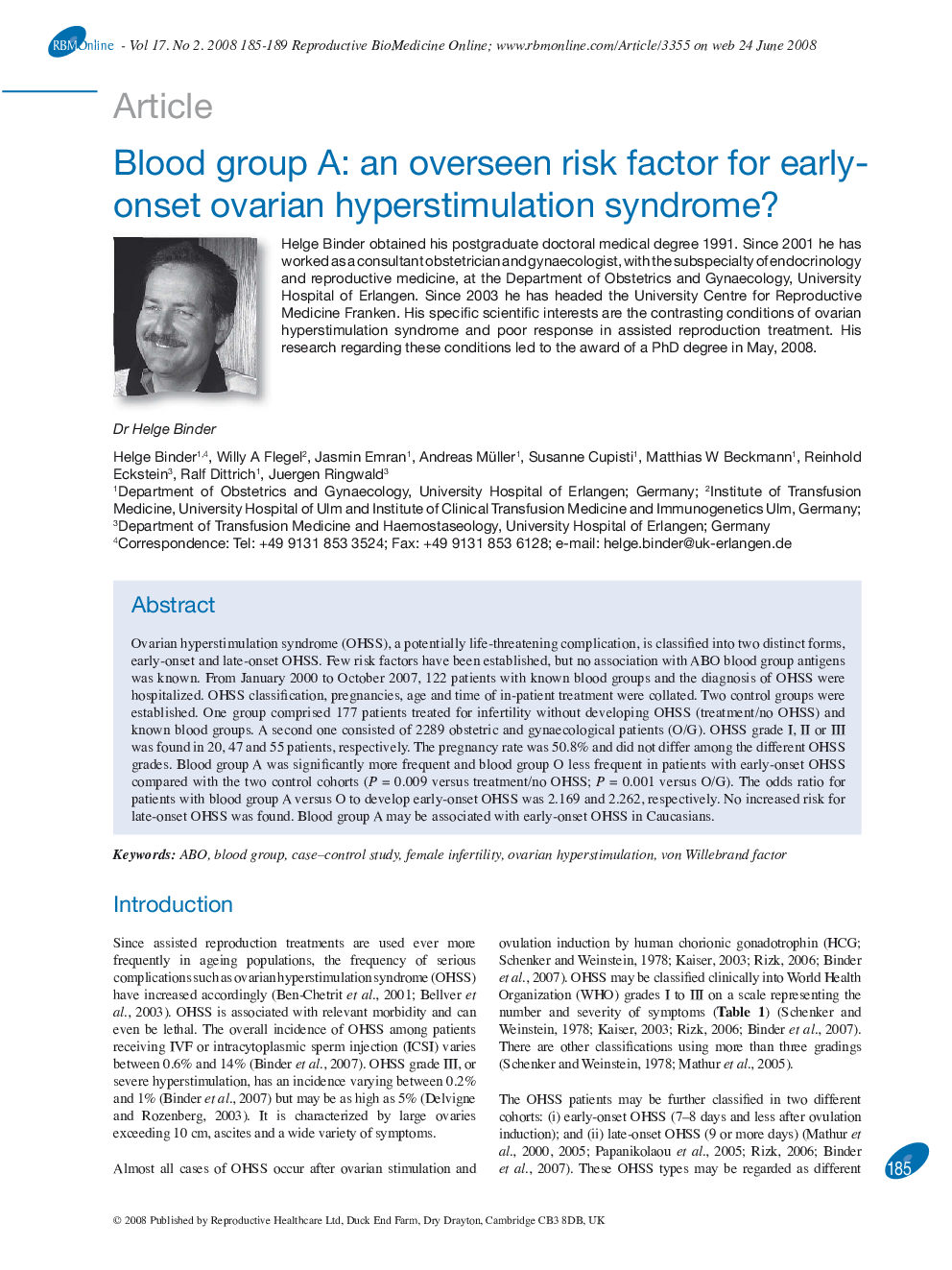| Article ID | Journal | Published Year | Pages | File Type |
|---|---|---|---|---|
| 3972767 | Reproductive BioMedicine Online | 2008 | 5 Pages |
Ovarian hyperstimulation syndrome (OHSS), a potentially life-threatening complication, is classified into two distinct forms, early-onset and late-onset OHSS. Few risk factors have been established, but no association with ABO blood group antigens was known. From January 2000 to October 2007, 122 patients with known blood groups and the diagnosis of OHSS were hospitalized. OHSS classification, pregnancies, age and time of in-patient treatment were collated. Two control groups were established. One group comprised 177 patients treated for infertility without developing OHSS (treatment/no OHSS) and known blood groups. A second one consisted of 2289 obstetric and gynaecological patients (O/G). OHSS grade I, II or III was found in 20, 47 and 55 patients, respectively. The pregnancy rate was 50.8% and did not differ among the different OHSS grades. Blood group A was significantly more frequent and blood group O less frequent in patients with early-onset OHSS compared with the two control cohorts (P = 0.009 versus treatment/no OHSS; P = 0.001 versus O/G). The odds ratio for patients with blood group A versus O to develop early-onset OHSS was 2.169 and 2.262, respectively. No increased risk for late-onset OHSS was found. Blood group A may be associated with early-onset OHSS in Caucasians.
